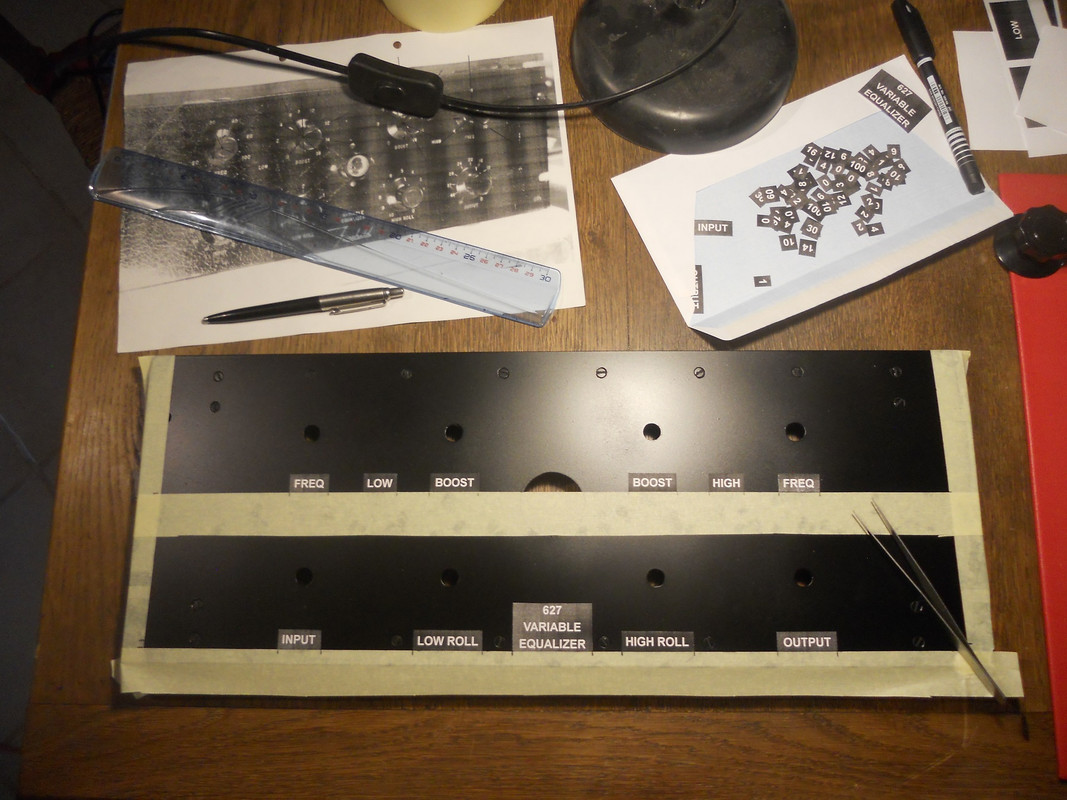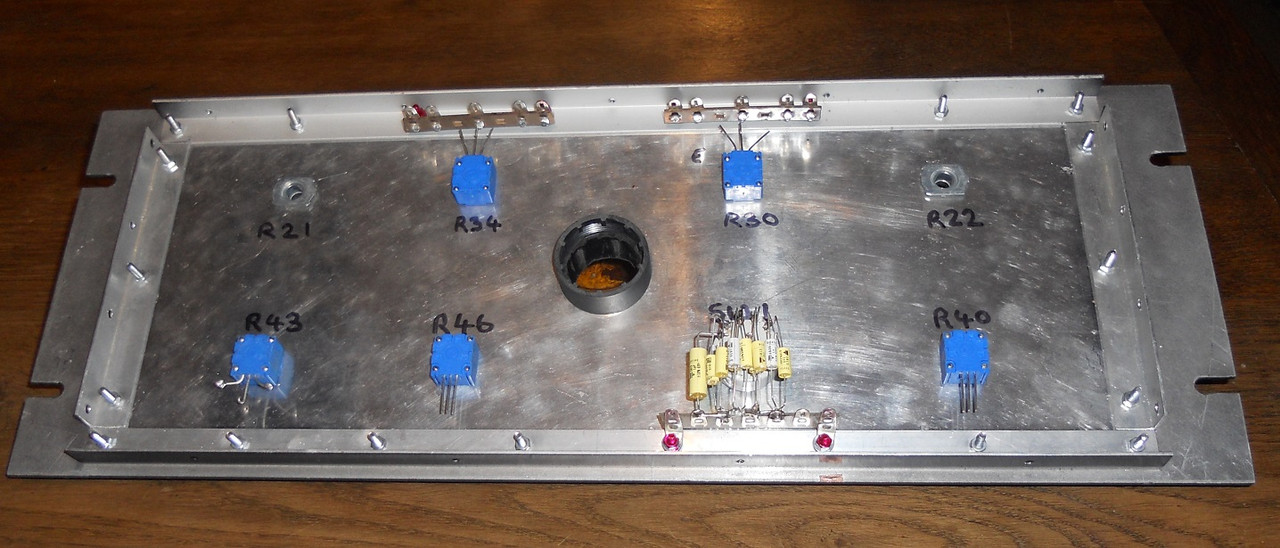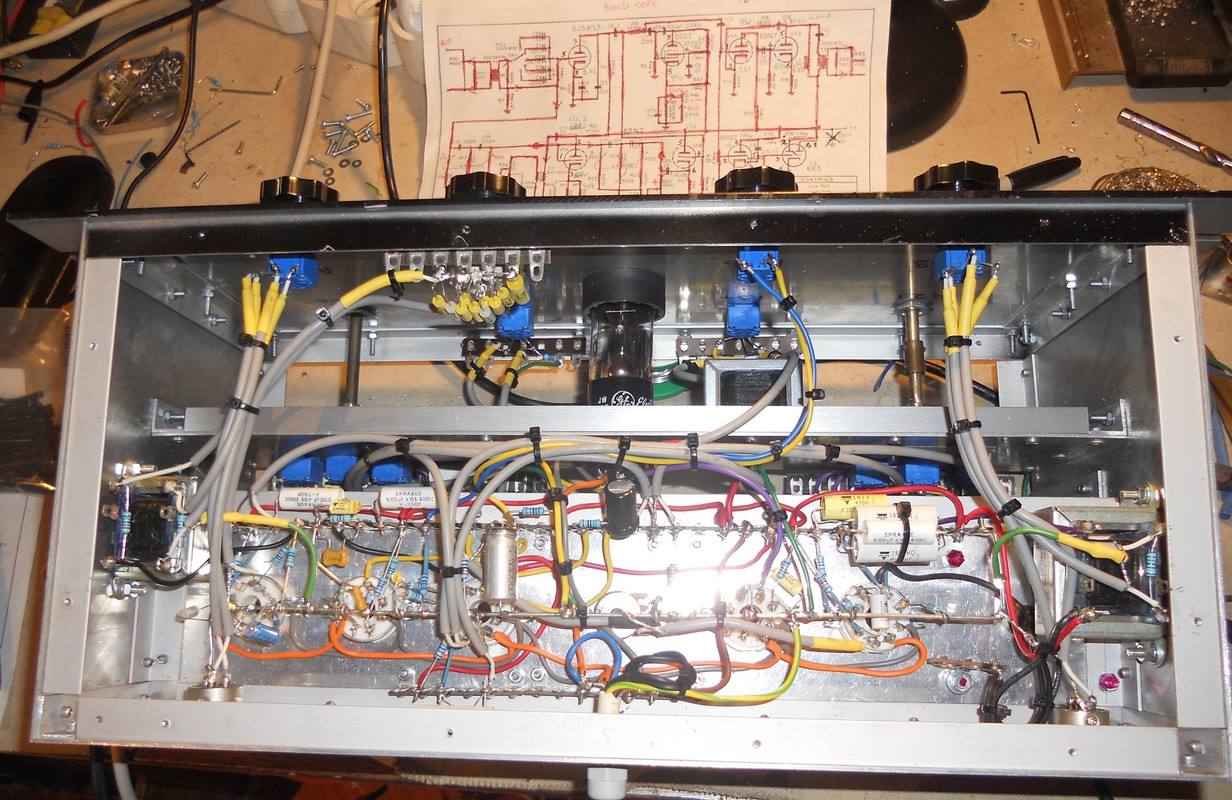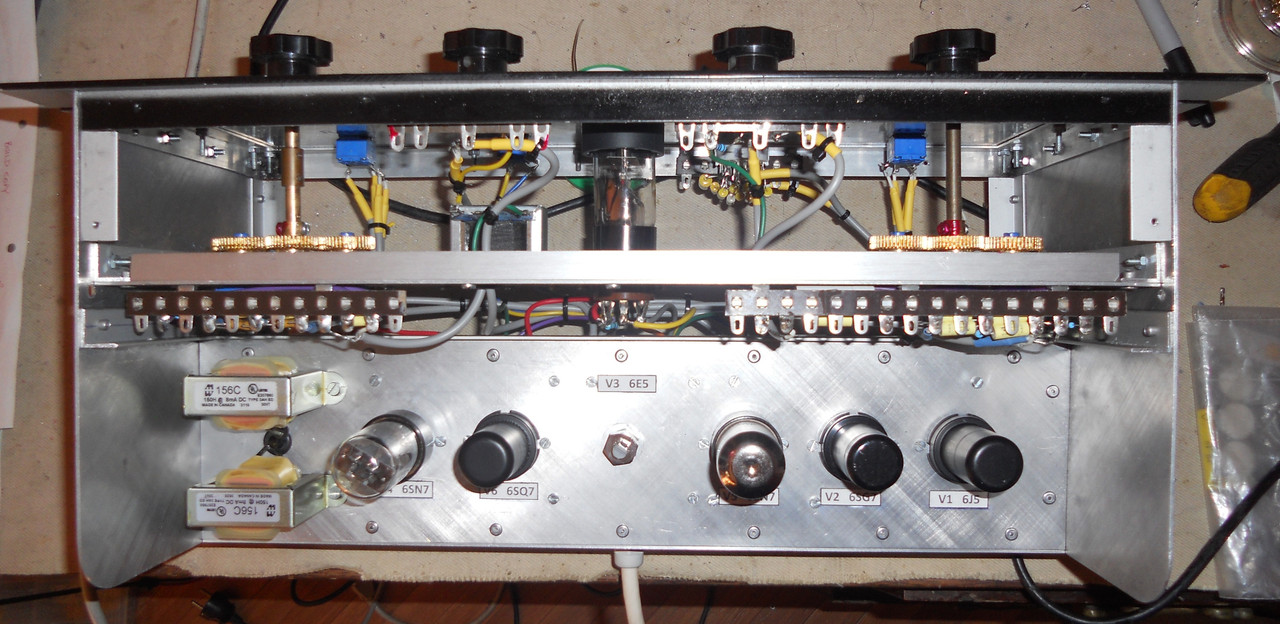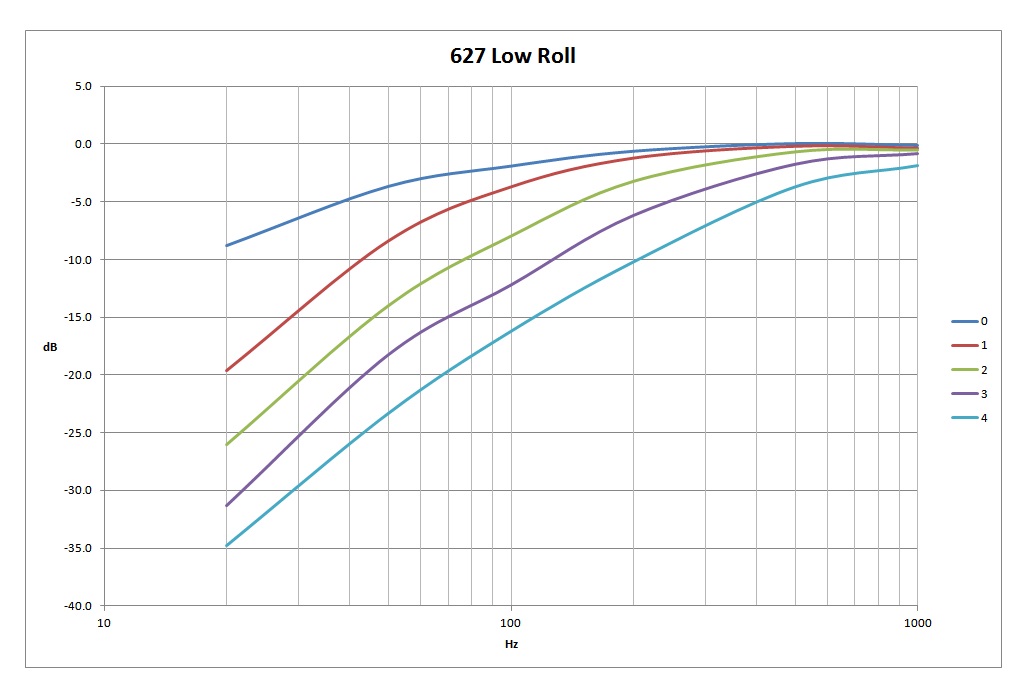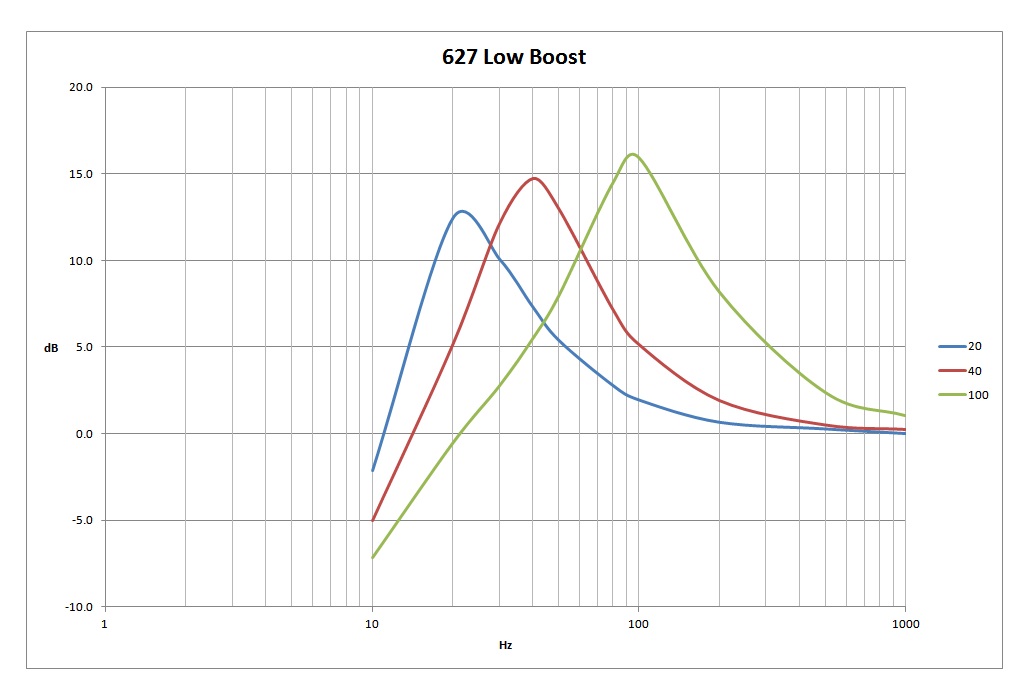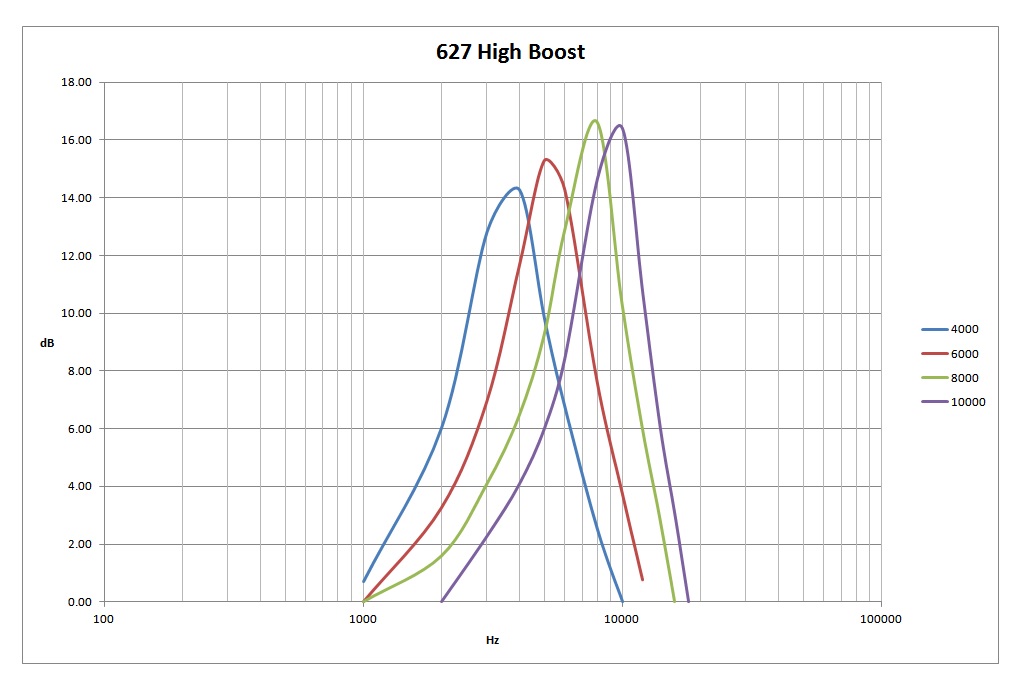It has been a while since the last post as I had to solve an alignment problem with the pot extensions.
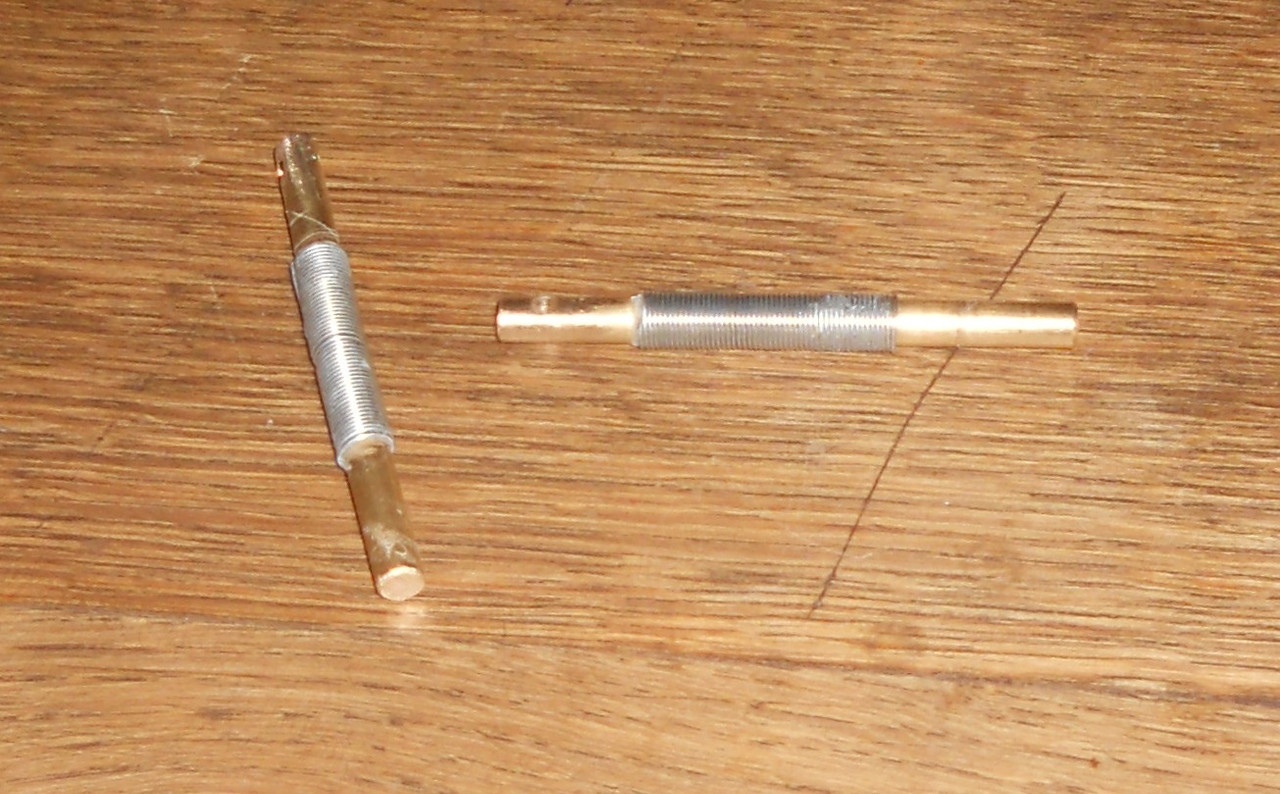
I cut the rods in half and joined them with a tight fitting spring glued on; this allows a nice smooth movement.
I roughened the surface of the front panel and applied two coats of aluminium primer.
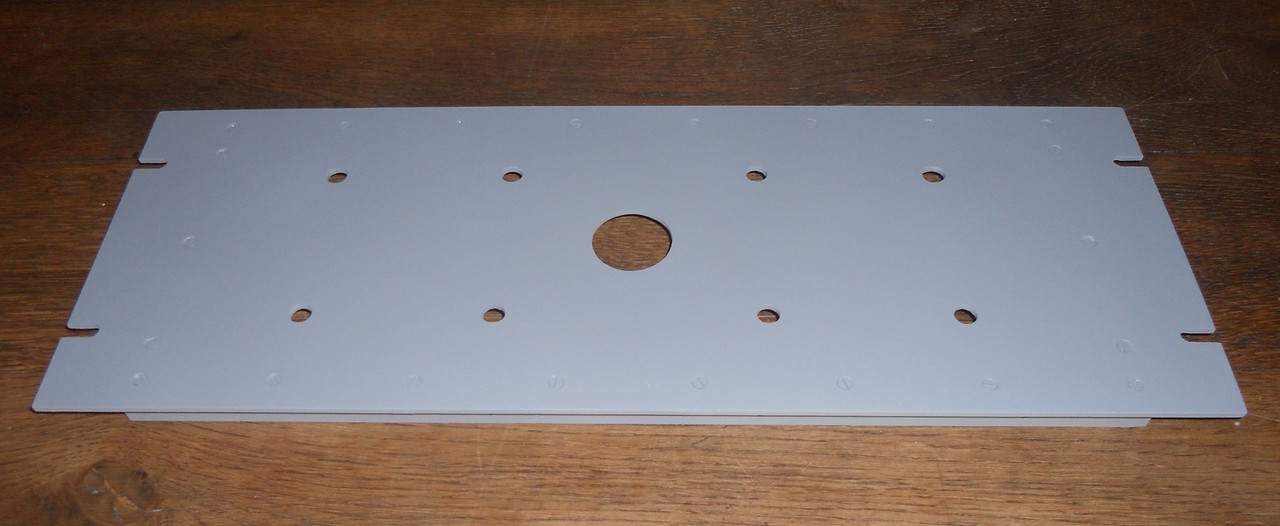
The next step is to apply some matte black before the lettering.
The lettering font is a very close match to Arial and the letters and numbers appear to be about 4mm high.
From the photos I saw, I could not make out if the low roll was showing 60 or 80 before the 100. So I plotted the angle of the letters on the pot against frequency and got a nice curve with 60, but 80 was completely wrong.
The next job is to spray it matte black then to fix the lettering, then the whole lot will be sprayed with varnish.
best
DaveP

I cut the rods in half and joined them with a tight fitting spring glued on; this allows a nice smooth movement.
I roughened the surface of the front panel and applied two coats of aluminium primer.

The next step is to apply some matte black before the lettering.
The lettering font is a very close match to Arial and the letters and numbers appear to be about 4mm high.
From the photos I saw, I could not make out if the low roll was showing 60 or 80 before the 100. So I plotted the angle of the letters on the pot against frequency and got a nice curve with 60, but 80 was completely wrong.
The next job is to spray it matte black then to fix the lettering, then the whole lot will be sprayed with varnish.
best
DaveP





